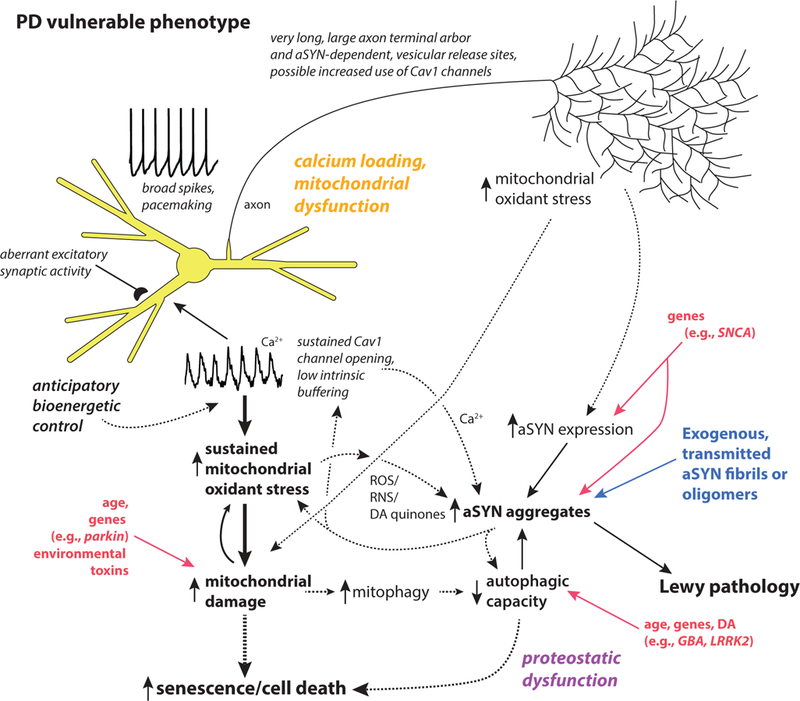Figure 1:

Schematic summary of the key traits of neurons that are vulnerable in PD. Two major drivers of pathogenesis are mitochondrial and proteostatic dysfunction. Mitochondrial dysfunction is proposed to be a consequence of anticipatory (feed-forward) control of mitochondrial respiration by calcium, and yet undefined axonal bioenergetic factors working in combination with genetic and environmental factors (e.g., toxins). Proteostatic dysfunction is proposed to arise from aSYN aggregation promoted by oxidant stress, elevated cytosolic calcium and DA quinones, in addition to lysosomal dysfunction promoted by increased mitophagy and oxidant damage to lysosomal proteins like glucocerebrosidase. Solid lines make connections between events that are well-established in mammalian models; dashed lines connect mechanisms for which there is good but not unequivocal support.
